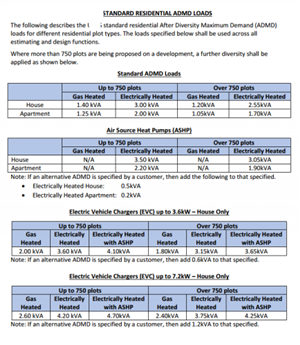Just come across the attached - a snippet from an IDNO's documentation about loads for residentials.
Loads a lot lower than I am used to - what are peoples thoughts on this?
I would not be comfortable going down that low - e.g. an all electric flat with panel rads and a 3kW cylinder - don't see how you could drop down so much.
i tend to see 4.5 to 5.5 kVA for all electric flats, lowerend being for single bed units and 5.5 for two bed

